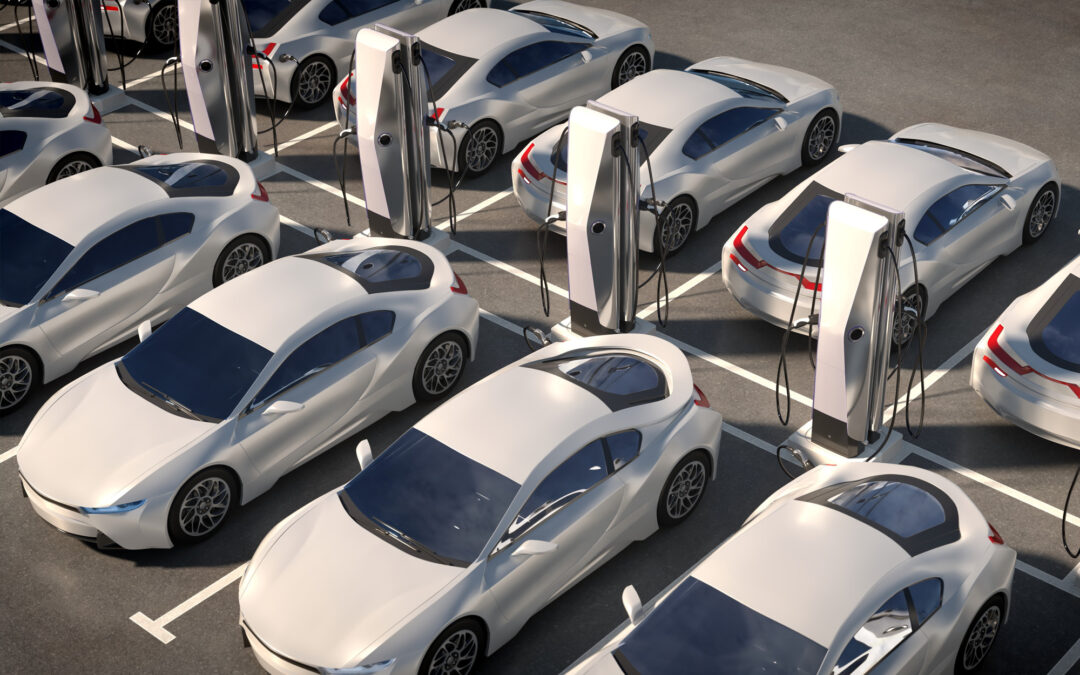In an era marked by a growing emphasis on sustainability and environmental responsibility, the integration of electric vehicles (EVs) into fleet strategies stands as a pivotal move for large businesses and universities. This blog explores the transformative potential of EV fleets, delving into their current state, fundamental aspects, determining factors for adoption, and a comprehensive guide on implementation.
The Current State of EV Fleets
The adoption of electric vehicles in fleet management is gaining momentum globally. As we stand at the cusp of a sustainable transportation revolution, businesses and universities are recognizing the numerous advantages that EV fleets bring. The current state of EV fleets is marked by technological advancements, increased infrastructure support, and a growing variety of EV models suitable for various purposes.
Advantages of EV Fleets
Reap the benefits of the following areas:
- Environmental Impact: EV fleets significantly reduce carbon emissions, contributing to a greener and more sustainable environment. This aligns with the sustainability goals of large businesses and universities aiming for carbon neutrality.
- Cost Savings: Although the initial investment in EVs may seem high, the operational and maintenance costs are generally lower than in traditional vehicles. Reduced fuel expenses and fewer maintenance requirements translate into long-term savings.
- Government Incentives: Many governments offer incentives for adopting EVs, ranging from tax credits to grants. Large businesses and universities can leverage these incentives to make the transition more financially appealing.
- Brand Image and Corporate Social Responsibility: Incorporating EV fleets enhances the brand image by showcasing a commitment to environmental responsibility. This resonates positively with customers, stakeholders, and the community.
- Innovation and Technological Advancements: Being at the forefront of technological advancements showcases a commitment to innovation, attracting talent, and positioning large businesses and universities as leaders in their respective fields.
Determining If EV Fleets Are the Right Fit
While the benefits are evident, determining if EV fleets are the right fit for a business or university requires a comprehensive analysis of various factors. Consider the following key aspects:
Operational Needs
- Range Requirements: Evaluate the daily travel distance of your fleet vehicles. The advancements in EV technology have significantly increased the range of electric vehicles, but it’s crucial to ensure they align with your operational needs.
- Charging Infrastructure: Assess the availability and feasibility of charging infrastructure. Consider the location of charging stations, charging times, and the impact on operational efficiency.
- Vehicle Types: Identify the types of vehicles needed for your operations. While passenger EVs are common, the market now offers electric vans, trucks, and specialized vehicles suitable for diverse business and university needs.
Financial Considerations
- Total Cost of Ownership: Compare EVs’ total cost of ownership against traditional vehicles. Consider the purchase price and factors like maintenance, fuel costs, and potential incentives.
- Financial Incentives: Research available government incentives and grants. These can significantly offset initial costs and contribute to the financial viability of transitioning to an EV fleet.
Regulatory Landscape
- Environmental Regulations: Stay informed about your region’s environmental regulations and emission standards. Adopting EV fleets may help your business or university comply with increasingly stringent environmental regulations.
- Local Incentives: Some regions offer additional incentives, such as access to special lanes or reduced tolls for electric vehicles. Consider how these local incentives may further enhance the appeal of EV fleets for your operations.
If you are considering switching to an EV fleet permanently, you’ll need charging stations. Check out how Lonestar helps in the financial assistance process.
Basics of EV Fleets
Understanding the basics of EV fleets is essential for a successful transition. Here are key considerations:
Charging Infrastructure
- Charging Stations: Install charging stations at strategic locations. Consider workplace charging for employees and charging stations at centralized points for university campuses.
- Charging Times: Understand the charging times required for different EV models. Fast-charging stations can significantly reduce downtime, ensuring efficient fleet operations.
Fleet Management Systems
- Telematics: Implement telematics and fleet management systems to monitor and optimize EV fleet performance. These systems provide real-time data on vehicle health, energy consumption, and driver behavior.
- Route Optimization: Leverage technology to optimize routes and minimize energy consumption. This ensures efficient use of EVs and maximizes their range during daily operations.
Employee or Driver Training
- EV Familiarization: Provide training programs for drivers and employees to familiarize them with EVs. Address concerns, misconceptions, and highlight the benefits of electric vehicles.
- Charging Etiquette: Educate drivers on optimal charging practices and etiquettes, emphasizing the importance of keeping the charging infrastructure accessible and efficient for all users.
Implementation of EV Fleets
The successful implementation of EV fleets involves a systematic approach:
Pilot Programs
- Start With a Pilot: Initiate a small-scale pilot program to evaluate the practicality of EVs for your specific operational needs. Monitor performance, gather feedback, and adjust the strategy accordingly.
- Performance Metrics: Define key performance metrics to assess the success of the pilot program. This may include factors such as energy consumption, cost savings, and environmental impact.
Infrastructure Investment
- Charging Infrastructure: Invest in a robust charging infrastructure. Collaborate with local authorities and private partners to establish a network of charging stations.
- Fleet Upgradation: Gradually replace traditional vehicles with electric ones as part of your fleet renewal strategy. This ensures a smooth transition without disrupting regular operations.
Employee Engagement
- Communication: Communicate transparently with employees and stakeholders about the transition to EV fleets. Address any concerns and highlight the positive impact on the environment and operational efficiency.
- Incentivize EV Adoption: Consider incentivizing employees who choose to adopt electric vehicles, further encouraging the transition within your organization.
Continuous Improvement
- Adaptability: Stay adaptable and open to technological advancements. The EV landscape is evolving rapidly, and staying at the forefront of innovation ensures sustained benefits.
- Feedback Loops: Establish feedback mechanisms to continuously gather insights from drivers, employees, and stakeholders. Use this information to make informed adjustments to your EV fleet strategy.
Revolutionize or Integrate an EV Fleet With Lonestar Integrated Solutions Today
At Lonestar, we are your planning experts for seamless EV fleet implementation. Leverage our expertise to navigate the transition efficiently, ensuring optimal charging infrastructure, strategic pilot programs, and employee engagement for success.

